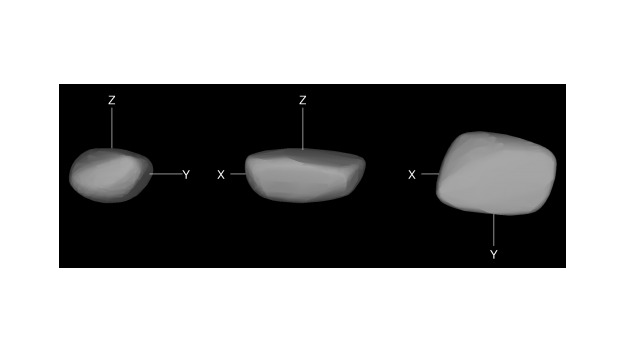[아이뉴스24 정종오 기자] The asteroid’s non-main axis rotation has been confirmed. It was analyzed that this asteroid could change its orbit through the so-called’Yov effect’ caused by the difference in energy between day and night.
Accurate calculation of this changing orbit can provide a detailed picture of the potential for collision with the Earth. It can also be applied to other similar asteroids. It means that you can quickly find an asteroid that hits the Earth.
A joint research team from the Korea Astronomical Research Institute and Charles University in the Czech Republic found a new fact that the TC4’s rotation cycle was accelerated by capturing the asteroid 2012 TC4 (TC4) performing a peculiar non-major rotation unlike a general asteroid. found.

Non-principal axis rotation refers to the rotation of the top as if it twists and rotates just before it collapses. This is a rotational motion in which the precession motion in which the rotation axis rotates occurs simultaneously.
Asteroids are mainly located in asteroid belts orbiting between Mars and Jupiter’s orbits. These are small objects in the solar system. The asteroid TC4 reached a distance of about 95,000 km and 50,000 km from Earth in 2012 and 2017, respectively. From space distance, it is a very close approach.
The International Asteroid Alert Network (IAWN) and Cheonmunyeon promoted a joint observation campaign for the asteroid TC4. 21 astronomical observatories around the world participated and tracked the change in brightness of TC4. The joint research team at Cheon Mun-Yeon-Carel University analyzed the observation data and implemented a 3D shape model of TC4. As a result, it was found that the rotation speed of the TC4 increased by 18 seconds in the five years from 2012 to 2017.
The International Asteroid Warning Network (IAWN) is a UN-approved virtual network that discovers and tracks near-Earth asteroids. The collision probability is calculated and an alert is issued when a certain level of threat is predicted. This will be communicated to the UN and member states to prepare measures to reduce damage. In Korea, Moon-yeon Cheon is participating as a representative.
Asteroids do not emit light on their own and only reflect some sunlight. Due to its small size, it is difficult to observe and study directly. The research team implemented a 3D model by inverting the change in brightness that appears as the TC4 rotates and reflects sunlight. Through this, it was found that TC4 is a non-main-rotating asteroid.
◆2012 TC4 track video
=https://www.youtube.com/watch?v=tGumjFc_8fc
As a result of the calculation, assuming various internal and external factors applied to the asteroid, the main reason for the change in the rotational state of TC4 is the Yarkovsky-O’Keefe-Radzievskii– Paddack effect (YORP) due to the absorption and re-emission of solar energy of the asteroid. I analyzed it because of it.
Because asteroids rotate like Earth, they have day and night. Small asteroids, without air and water, quickly heat up in the daytime areas and cool immediately at night. Because of this, the radiant energy from asteroids also differs significantly between day and night.
The difference in energy emitted by the asteroid creates a force called the Yop Effect (YORP) or the Yarkowsky Effect, causing a change in the asteroid’s orbit. This force is not strong, but it can push the asteroid little by little in one direction and eventually change its orbit.
For planets as large and heavier as Earth, the Yoff effect is negligible. On the other hand, small and light asteroids cannot be ignored.
Dr. Lee Hee-jae, who led the study, said, “The study on the characteristics of near-Earth asteroids and the Yope effect is very important for early detection of asteroids with high potential for Earth collision and to find out their exact orbit.” “We have actually confirmed the change in rotation of the asteroid and will greatly contribute to predicting the risk of asteroid Earth impact in the future.”
Moon-Yeon Cheon is planning a direct exploration mission for another asteroid, Apophis, which rotates non-main axis. Apophis is expected to pass 31,000 kilometers above the surface on April 14, 2029.
Apophis is also predicted to change its rotation characteristics under the influence of the tidal forces caused by the Earth. Moon-Yeon Cheon plans to use the results of this study in planning Apopis exploration missions.
The results of this study (paper title: Spin Change of Asteroid 2012 TC4 Probably by Radiation Torques) were published in the Astronomical Journal on February 11, 2021.
◆2012 TC’s rotational motion video
=https://www.youtube.com/watch?v=E_KZPyIW_UU
